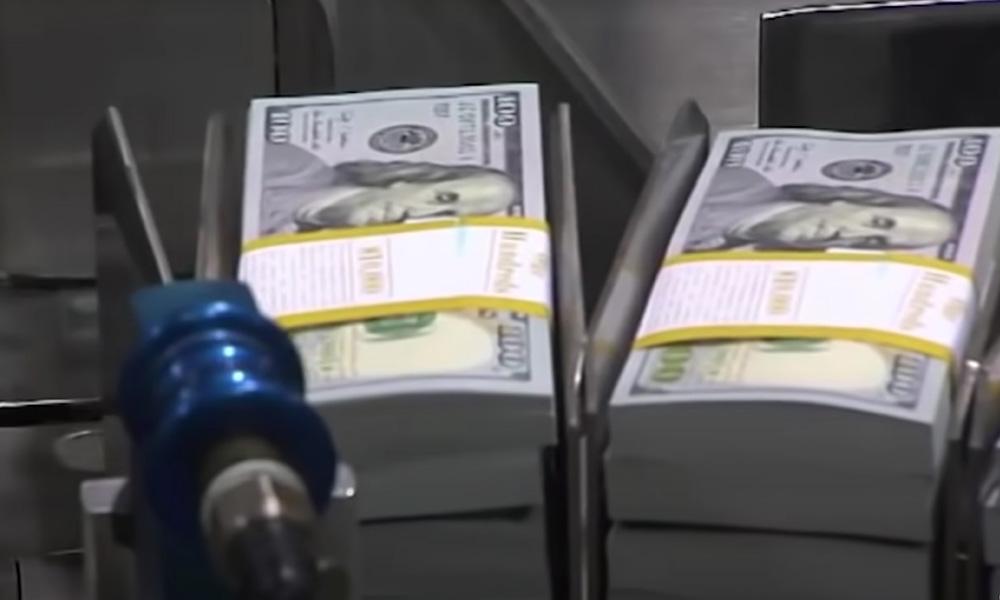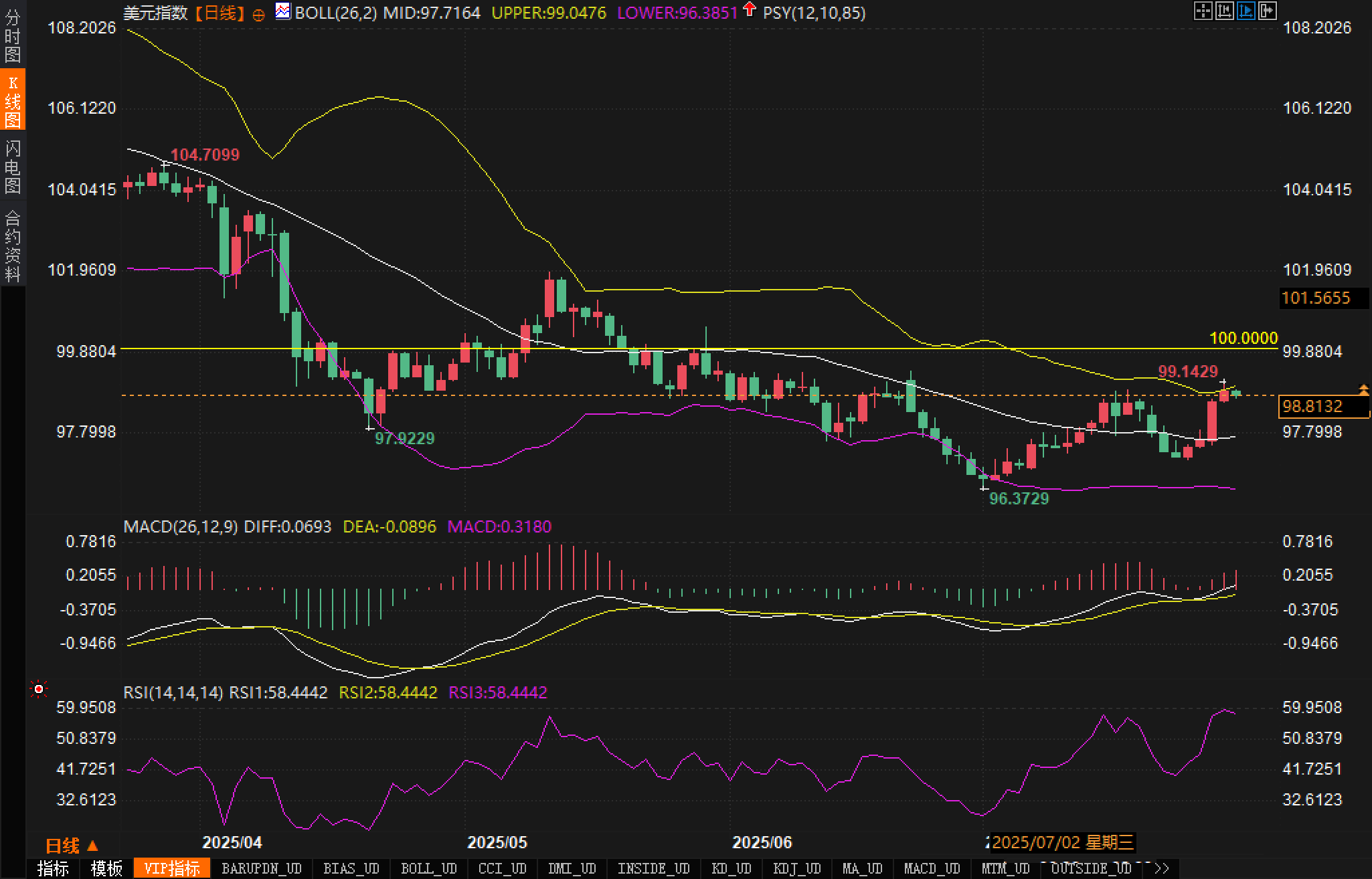Powell's speech is key, and the direction of the US dollar will soon be revealed
2025-07-30 16:40:39

Fundamentals
The current dollar trend is primarily driven by two factors: market speculation over the Federal Reserve's policy direction and safe-haven demand driven by external macroeconomic uncertainty. While the US labor market remains resilient, recent inflation and economic growth indicators have shown mixed results, further diverging market expectations regarding the future economic path. The upcoming Q2 PCE price index and July non-farm payroll data will be crucial signals for assessing whether the US economy is experiencing a "soft landing."
Politically, the US government's pressure on the Federal Reserve is also a variable influencing market pricing. President Trump has again publicly criticized Fed Chairman Powell. Although the market generally expects no removal, such remarks still cast a shadow on the Fed's independence and pose a potential threat to the medium- and long-term credibility of the US dollar.
In Europe, the new trade agreement between the US and the EU has injected some optimism into the market. Amidst the interplay of multiple variables, the US dollar index stands at a critical crossroads. Any deviation from market expectations by Powell's remarks this morning is expected to trigger significant price fluctuations.
Technical aspects:
The US dollar index is currently around 98.80. It has rebounded temporarily from the low of 96.37, reaching a high of 99.14, but encountered resistance and fell back when approaching the integer mark of 100.00, reflecting significant selling pressure above this position.

The candlestick chart shows that bullish momentum has been hindered, leading to short-term profit-taking pressure. However, the overall rebound trend remains intact, with prices trading between the middle Bollinger Band (97.72) and the upper Bollinger Band (99.04). The Bollinger Band remains slightly open, reflecting a relatively strong and volatile market.
Regarding the MACD indicator, the DIFF line continues to rise from below the zero axis, and the MACD histogram has been expanding since late July, indicating that short-term momentum has shifted from bearish to bullish. However, the current MACD indicator is close to the previous high. If the evening event drives the market less than expected, be vigilant about the risk of a short-term correction.
The RSI indicator is around 58.4 and has not yet entered the overbought area. It still has further upward momentum, but it also suggests that the bulls are facing a critical zone and the market urgently needs new catalysts to complete a breakthrough of the 100 mark.
From a technical perspective, the analysis shows that 99.14 and the integer 100.00 constitute the key upper resistance range. If it can break through with large volume, it is expected to re-challenge 101.00; the lower support level is 97.92 and the lower Bollinger band 96.38. Once it falls below the latter, it will constitute a phased trend reversal signal.
Market sentiment observation:
The market is currently in a state of "pre-news silence," with risk appetite clearly converging. Traders are generally reluctant to make heavy bets before the FOMC results are released, reflecting a typical event-driven wait-and-see market.
The Fear & Greed Index showed no significant extremes, reflecting a lack of consensus in the market and a strong wait-and-see attitude among investors. The US dollar's role as a global liquidity anchor makes it attractive amidst the current backdrop of uncertain interest rate expectations and ongoing international uncertainty, thus limiting its decline.
However, it is worth noting that if the Fed turns dovish, coupled with increased pressure from the White House and escalating international uncertainties, the dollar's safe-haven status may be challenged, triggering a rapid shift in market sentiment.
Outlook for the future:
Bullish Outlook:
Analysts believe that if Powell continues to emphasize "data-driven decision-making" at the press conference, or suggests that inflation remains sticky, the market may interpret this as maintaining a hawkish tone. At that time, the US dollar index is expected to break through the 100 mark and further attack 101.00, forming a technical breakthrough pattern.
Combining the current RSI and MACD trends, if accompanied by upward volume, the US dollar may enter a new round of upward channel, indicating that the short-term trend is expected to shift from oscillation to unilateral.
Bearish Outlook:
On the other hand, analysts believe that if Powell's tone takes a dovish turn, or if he expresses concerns about the future economic outlook, the market will quickly lower its expectations for rate hikes, and the US dollar may face short-term profit-taking pressure. Key support below is at 97.92. If this level is broken, a retest of 96.38 may be inevitable.
Combining the Bollinger Bands trajectory and oscillation structure, if the price falls below the middle Bollinger Band and breaks down with large volume, it indicates that the rebound is over and the market may enter a mid-term adjustment phase. Especially in the context of a lack of obvious transaction support structure below, the decline may be relatively rapid.
- Risk Warning and Disclaimer
- The market involves risk, and trading may not be suitable for all investors. This article is for reference only and does not constitute personal investment advice, nor does it take into account certain users’ specific investment objectives, financial situation, or other needs. Any investment decisions made based on this information are at your own risk.





















